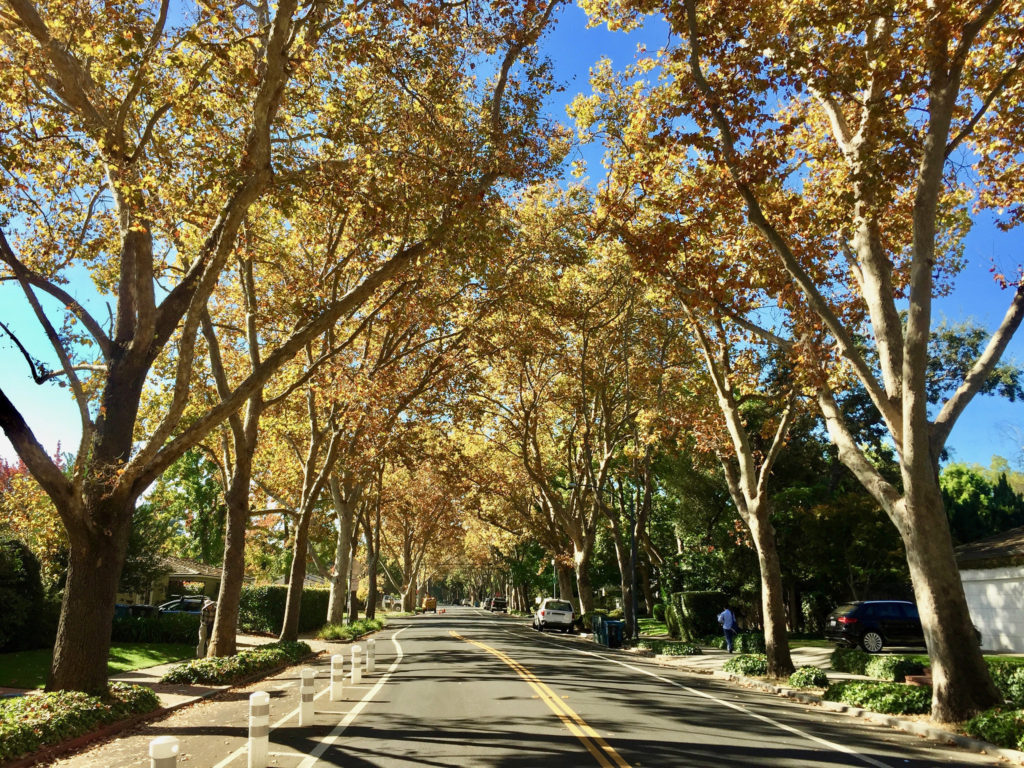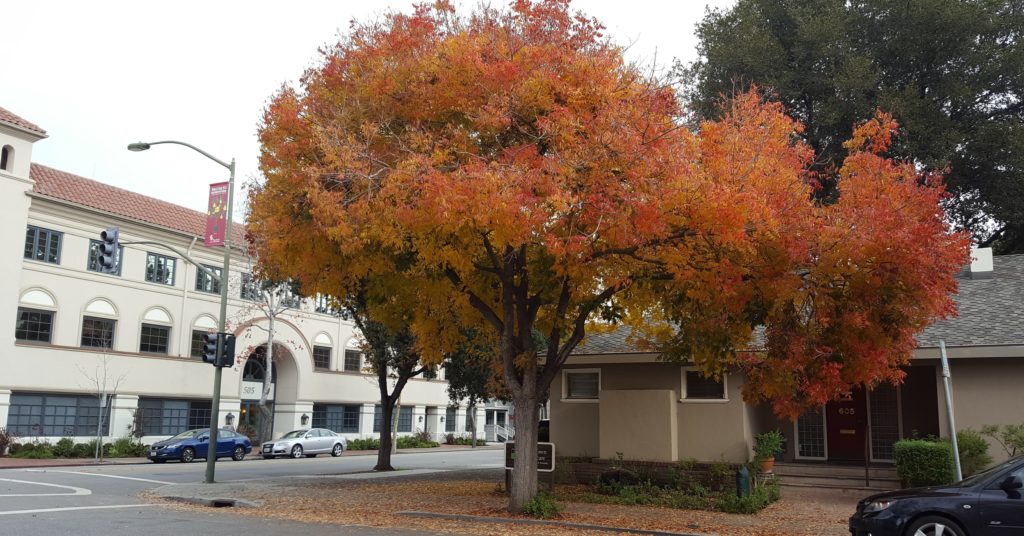- About Us
- Our Work
- Tree Info
- Get Involved
- Blog
- Volunteer
- Support Us
By Canopy Team on November 9, 2021

As Palo Alto leaders consider how to strengthen the city’s laws to protect more trees, they are turning to Canopy’s advocacy committee for advice. Canopy Executive Director Catherine Martineau and Holly Pearson, a board member and advocacy committee chair, are consulting with an ad hoc committee of residents as well as city staff who are working to update the tree ordinance.
Catherine and Holly joined several dozen community members at an October 18 meeting of the Palo Alto City Council to discuss updating the ordinance. Expanding the number of tree species that the city protects is one proposal. Currently Palo Alto protects just three native species—the coast redwood, coast live oak, and valley oak—while neighboring communities protect all tree species once they reach a certain size. Other proposed changes address the permit process for removing a protected tree and requirements for replacing trees that are removed.
Speaking at the council meeting, Catherine noted that the world has changed a great deal since 2001, the last time the ordinance was updated. She offered three key reasons why updates are needed, beginning with accelerating climate change.
“The role that nature-based solutions will play in mitigating and adapting to climate change is now widely recognized,” she said. “Nature-based solutions will represent 30 percent of the needed actions. Yet globally, they only represent 3 percent of the investment. In the urban environment specifically, there is one primary nature-based solution: the urban forest.”
The importance of urban trees in promoting public health has also become clearer, Catherine noted. “Research has clearly established that a vibrant urban forest is essential for public health, both physical and psychosocial health, and this is crucial in all communities.”
Thirdly, Palo Alto has to address its increased need for housing, and those decisions are sure to impact the city’s trees, she added.
The city’s Parks and Recreation Commission and Architectural Review Board will review the proposed ordinance revisions in the coming months while conducting more public outreach. The changes will come back to the city council for approval in the spring of 2022.
“Palo Alto’s tree ordinance needs to be updated because it doesn’t protect enough of the urban forest to preserve the city’s overall canopy or grow it in the wake of development. You could have a silver linden, say, a beautiful 100-year-old tree that brings a lot of shade, and there’s no rule right now to protect it.”

Advocating for good tree policy with local governments is nothing new for Canopy, Catherine and Holly note. In 1996, a group of Palo Alto tree advocates, The Tree Task Force, convinced the city council to encourage the city manager to hire a planning arborist, who would create the first tree ordinance to protect private trees in Palo Alto. The city also jump started the founding of Canopy in 1996 with funding for its first several years. Over time, Canopy’s mission grew to include surrounding communities.
Canopy created its advocacy committee a few years ago, including Canopy staff and board members as well as community members. Advocacy committee members talk regularly with urban foresters, city planners, and elected officials in Canopy’s service area—which includes Palo Alto, East Palo Alto, Menlo Park, Mountain View, and North Fair Oaks.
“We’re trying to make sure that protections for trees are strengthened in these communities through ordinances and urban forest master plans,” Holly says. “Currently Canopy is involved in the creation of East Palo Alto’s first such master plan. We also work at the state level and, at all levels, advocate for funding for urban forester positions and budgets for planting and maintenance, so the plans actually get carried out.”
The movement to update Palo Alto’s ordinance gained steam in 2021 when Palo Alto Mayor Tom DuBois named it as one of his priority projects. The ad hoc committee worked through this past summer to draft revisions, seeking advice from Canopy and its advocacy committee.
Holly and Catherine are not disappointed that the city council moved, at the October meeting, to give the ordinance more time for review and discussion. The council set a deadline of April for city staff to come back with final revisions. “We have six months to make sure about all of the ingredients and to build more public support,” Catherine says.
“We’ll update the group of supporters who have spoken up, and we’ll do additional community outreach,” Holly says.
SIGN-UP: I’d like to receive updates on Palo Alto’s tree ordinance updates
The tenor of the council meeting discussion was encouraging. “People really listened,” Catherine says. Nearly all of the residents who spoke were in favor of stronger protections. Holly was pleased to hear a number of speakers talk about building with “nature in mind, the idea that we can design around existing trees.”
“I like to think that trees are something people can come together about,” Holly adds.
READ MORE: Palo Alto Online story, “City set to strengthen tree protection rules”